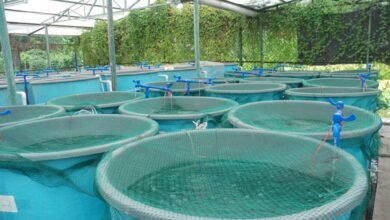Sports equipment is not just an essential part of your athletic endeavors; it’s also an investment in your health and performance. However, improper storage can lead to damage, deterioration, or even safety hazards. In this comprehensive guide, we’ll explore the best practices for safely storing your sports equipment to ensure its longevity and maintain optimal performance.
Importance of Proper Storage
Properly storing sports equipment is crucial for several reasons. Firstly, it helps prolong the lifespan of your gear, saving you money in the long run. Secondly, it ensures that your equipment remains safe to use, reducing the risk of injury caused by faulty or damaged gear. Additionally, organized storage makes it easier to locate and access your equipment when needed, streamlining your pre-game or workout routine.
Preventing Damage and Deterioration
One of the primary goals of storing sports equipment is to prevent damage and deterioration. Different types of gear require specific care to maintain their quality and functionality.
Clothing and Apparel
Sports apparel, including jerseys, shorts, and socks, should be washed and thoroughly dried before storage to prevent mold and mildew growth. Store them in a clean, dry area away from direct sunlight to avoid fading or discoloration. Avoid folding jerseys with screen-printed designs to prevent cracking or peeling.
Footwear
Properly storing athletic shoes helps maintain their shape and support, prolonging their lifespan. After each use, remove any dirt or debris and allow them to air dry completely. Avoid storing shoes in a damp environment, as this can promote bacterial growth and cause unpleasant odors. Use shoe trees or stuff them with newspaper to help them retain their shape.
Balls and Equipment
Balls should be stored indoors in a cool, dry place to prevent them from losing air pressure or becoming misshapen. Keep them away from extreme temperatures, as heat can cause them to expand and cold can make them brittle. Use a ball pump to maintain proper inflation levels regularly.
Key Considerations in Choosing Sports Apparel
When selecting sports apparel, several factors should be taken into account to ensure optimal performance and comfort.
Material
The choice of material significantly influences the functionality and comfort of sports apparel. Common materials include:
Moisture-Wicking Fabrics
Ideal for activities that induce perspiration, these fabrics draw moisture away from the skin, promoting evaporation and keeping the wearer dry.
Breathable Mesh
Mesh panels or inserts enhance ventilation, allowing air to circulate and preventing overheating during intense workouts.
Compression Fabric
Compression garments provide support to muscles, improve blood circulation, and reduce muscle fatigue. They are often used in activities like running, cycling, and weightlifting.
Fit
Proper fit is essential for
sports apparel to maximize comfort and performance. Considerations for fit include:
Snug but Not Restrictive
Garments should fit snugly without constricting movement. This ensures freedom of motion while providing adequate support.
Correct Sizing
Consult size charts provided by manufacturers to determine the most suitable size for your body type. Avoid sizing up or down excessively, as this can lead to discomfort or performance issues.
Adjustability
Look for apparel with adjustable features such as drawstrings, elastic bands, or straps, allowing for a customizable fit.
Functionality
Sports apparel should be tailored to the specific demands of the activity or sport. Consider the following functional aspects:
Weather Resistance
Choose apparel designed to withstand environmental conditions prevalent during your workouts or competitions. This may include water-resistant jackets for outdoor activities or thermal layers for cold weather.
Reflective Elements
For outdoor activities conducted in low-light conditions, opt for apparel with reflective accents or detailing to enhance visibility and safety.
Pockets and Storage
Look for garments equipped with pockets or compartments to conveniently store essentials like keys, phone, or energy gels during workouts or races.
Tips for Safe and Organized Storage
Utilize Proper Containers and Shelving
Invest in durable containers, bins, or shelving units designed specifically for
sports equipment storage. Clear containers are ideal as they allow you to easily identify the contents without having to open them. Consider using hooks or racks to hang larger items such as bicycles or hockey sticks to maximize space and prevent damage.
Clean and Maintain Equipment Regularly
Regular cleaning and maintenance are essential for preserving the quality and functionality of your sports equipment. Follow manufacturer guidelines for cleaning and care instructions, and inspect your gear for any signs of damage or wear. Address any issues promptly to prevent further deterioration.
Create a Dedicated Storage Space
Designate a specific area in your home or garage for storing sports equipment. This helps keep your gear organized and prevents it from cluttering up other living spaces. Consider installing wall-mounted storage systems or overhead racks to make the most of vertical space.
FAQs
1. How should I store my hockey equipment to prevent odors?
To prevent odors in hockey equipment, thoroughly air out all gear after each use and consider using specialized deodorizing sprays or inserts. Hang equipment to dry in a well-ventilated area, and periodically clean items such as gloves and helmets with mild soap and water.
2. Can I store my sports equipment in a basement or attic?
Basements and attics can be suitable storage locations as long as they are dry, well-ventilated, and free from extreme temperatures. However, be mindful of potential moisture issues in basements and the risk of heat damage in attics. Consider using dehumidifiers or insulation to regulate conditions.
3. How do I store sports equipment long-term?
For long-term storage, clean and thoroughly dry all equipment before packing it away. Use breathable covers or bags to protect items from dust and pests, and store them in a climate-controlled environment away from direct sunlight. Check on stored equipment periodically to ensure it remains in good condition.
Conclusion
Properly storing sports equipment is essential for maintaining its quality, functionality, and safety. By following the tips outlined in this guide, you can ensure that your gear remains in top condition for years to come. From cleaning and maintenance to utilizing proper storage solutions, investing time and effort in caring for your sports equipment will pay off in the long run, enhancing your athletic performance and enjoyment.





